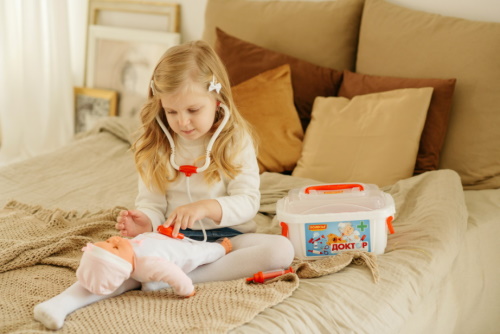Burn injuries can be one of the most excruciating and traumatic experiences one can sustain. Whether it's a minor kitchen incident or a severe melt from an accident, comprehending the phases of burn wound healing is critical for reliable therapy and recuperation. In this post, we will certainly delve deep into the complexities of shed injuries, their classification, recovery procedures, and vital treatment techniques.
Understanding Burn Wound Healing Presents: Recovery Insights
Burns are categorized into various levels based upon their severity, each calling for particular medical attention and treatment. The recovery procedure includes distinct stages that need to be recognized to ensure appropriate monitoring and recovery.

What Are the Various Kinds Of Burns?
Burns are typically categorized into three primary kinds:
First-Degree Burns: These impact only the external layer of skin (skin). Symptoms include inflammation, light swelling, and pain.

Second-Degree Burns: These expand into much deeper layers of skin (dermis), triggering blisters, serious discomfort, and swelling.
Third-Degree Burns: These include all layers of skin and may damage hidden cells. They appear white or charred and can be pain-free as a result of nerve damage.

Each type demands varying levels of clinical intervention and home care strategies.
The Recovery Process: An Overview
1. Hemostasis Phase
Immediately after a shed injury happens, the body launches the hemostasis phase to quit any kind of bleeding. Capillary constrict to minimize blood circulation to the affected location while platelets aggregate to create a clot.
2. Inflammatory Phase
This phase follows hemostasis and usually lasts for 3-5 days post-injury. It entails:
- Increased blood circulation to provide immune cells. Swelling as fluids collect in the tissue. Pain as nerve ends end up being sensitized.
3. Proliferative Phase
Taking area from about day 3 to week 3 post-burn, this stage consists of:
- Formation of brand-new tissue through collagen deposition. Re-epithelialization where brand-new skin cells migrate throughout the wound bed. Angiogenesis-- the development of new blood vessels-- to supply nutrients to recovery tissues.
4. Improvement Phase
This last phase can last numerous months to years after a melt injury and is noted by:
- Maturation of collagen fibers. Decreased vascularity as frameworks mature. Potential for scar formation depending on severity.
Importance of Specialized Burn Dressings: Crucial Burn Products for Home Care
Proper dressing is crucial in taking care of burn wounds successfully in the house. Specialized melt dressings serve numerous objectives:
- They safeguard against infections by creating an obstacle versus pathogens. They keep wetness while permitting gases exchange which is crucial for healing. Some dressings contain antimicrobial buildings that stop infection.
It's essential to pick ideal First Aid Course in Wagga Wagga - First Aid Pro dressings based upon shed level and size. For example, hydrogel dressings are usually Wagga Wagga First Aid Course Near Me - firstaidpro.com.au suggested for second-degree burns because of their cooling effect.
Scar Administration: Recovering After Major Burns
Once a melt has actually recovered, mark monitoring becomes essential for bring back function and appearance:
Silicone Gel Sheets: Using these aids flatten raised scars over time. Massage Therapy: Urging circulation can improve flexibility in scar tissue. Laser Treatments: Physician may suggest these for more severe scarring cases.Common Mistaken beliefs Concerning Burn Treatment
CPR Always Reboots Heart Myth: Debunking Common Burn Treatment Misconceptions
One widespread myth bordering mouth-to-mouth resuscitation is that it constantly reboots the heart; however, this isn't real-- mouth-to-mouth resuscitation boosts opportunities of survival yet doesn't guarantee heart activity returns to immediately after cardiac arrest. Understanding such false impressions can aid in offering precise emergency treatment during emergencies entailing burns or various other serious injuries.
FAQs about Burn Wound Healing
1. What must I do quickly after sustaining a burn?
Answer: Awesome the area under running water for at least 20 minutes and cover it with a tidy fabric or specialized dressing if necessary.
2. The length of time does it take for burns to heal?
Answer: Recovering times vary by melt degree; first-degree burns usually recover within a week while second-degree burns can occupy to three weeks or even more relying on severity.
3. When need to I seek clinical attention for a burn?
Answer: Seek specialist help if you have second-degree burns bigger than 3 inches or any kind of third-degree burns, despite size.
4. Can I make use of ice directly on a burn?
Answer: No, using ice straight can trigger additional skin damage; usage cool (not chilly) running water instead.
5. Exists any kind of effective home remedy for burns?
Answer: Aloe vera gel has relaxing residential or commercial properties that may help with minor burns yet speak with healthcare providers pertaining to considerable injuries.
6. Exactly how do I recognize if my burn is infected?
Answer: Indicators include enhanced inflammation, swelling, pus discharge, fever, or aggravating pain; look for instant medical suggestions if you presume infection.
Conclusion
Understanding melt injury healing phases is vital not just for clients however likewise caretakers who give support throughout recuperation stages. Expertise concerning specialized therapies-- like specialized dressings-- and aggressive mark administration substantially influences long-lasting results after significant burns occur.
Through understanding projects that highlight safety and security around typical risks like campfires or kitchen area equipment-- such as curling irons-- we can protect against lots of events before they happen! By understanding how to respond with effective emergency treatment abilities (like those educated in HLTAID012 programs), you empower yourself with important tools that safeguard lives during emergencies entailing burns or various other major injuries.
In recap, knowledge really is power when dealing with possible emergency situations related to burns-- from understanding therapy protocols like chemical or electrical burns first aid guidelines down via different child-centric difficulties seen within education and learning settings-- every information matters in making certain safety!
This detailed guide intends not just to educate but additionally inspire self-confidence in taking care of intricate situations successfully-- after all-- prevention incorporated with prompt intervention conserves lives!